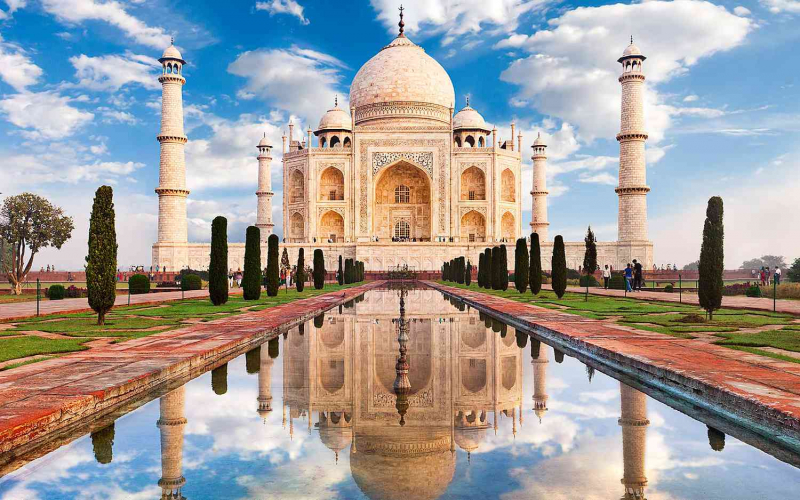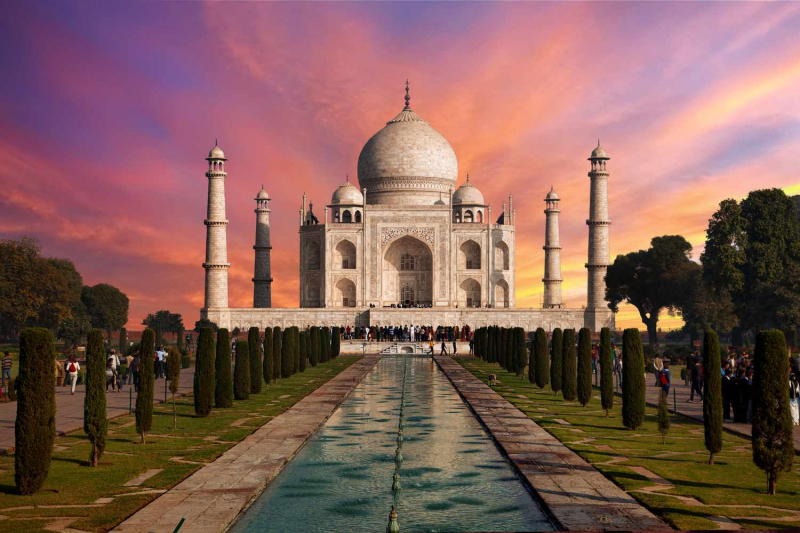Taj Mahal, India
Despite not being the tallest, it is unquestionably one of the most stunning and recognizable structures in the world. The Taj Mahal, also known as the Crown Palace, is one of the modern Seven Wonders of the World. It was constructed in memory of Mumtaz Mahal, the Mughal Emperor Shah Jahan's wife, who passed away in 1631 while giving birth to the couple's 14th child.
This remarkable monument's geometry, structural grandeur, exquisite calligraphy, inlaid diamonds, and gorgeous landscaping astound visitors. The Taj Mahal was more than a wedding memorial; it was Shan Jahan's declaration of eternal love to his late sweetheart. In his grief, Shah Jahan channeled his emotions into constructing an ornate and expensive mausoleum that would put all others to shame. It was also notable for being the first large mausoleum dedicated to a woman.
One of the best examples of Mughal architecture, which combines Persian, Turkish, and Indian design elements, is the Taj Mahal. Although Shah Jahan, who had a passion for design, is thought to have worked directly on the plans, there is no known main architect for the Taj Mahal. The 22-year construction process resulted in a magnificent structure and narrative that annually draws millions of tourists. The Iconic Building underwent construction from 1632 until 1648. It took an additional five years to complete the surrounding structures and gardens.
Completed: 1643
Function: Tomb
Architect: Ustad Ahmad Lahauri (1580 -1649)
Location: Agra, India














